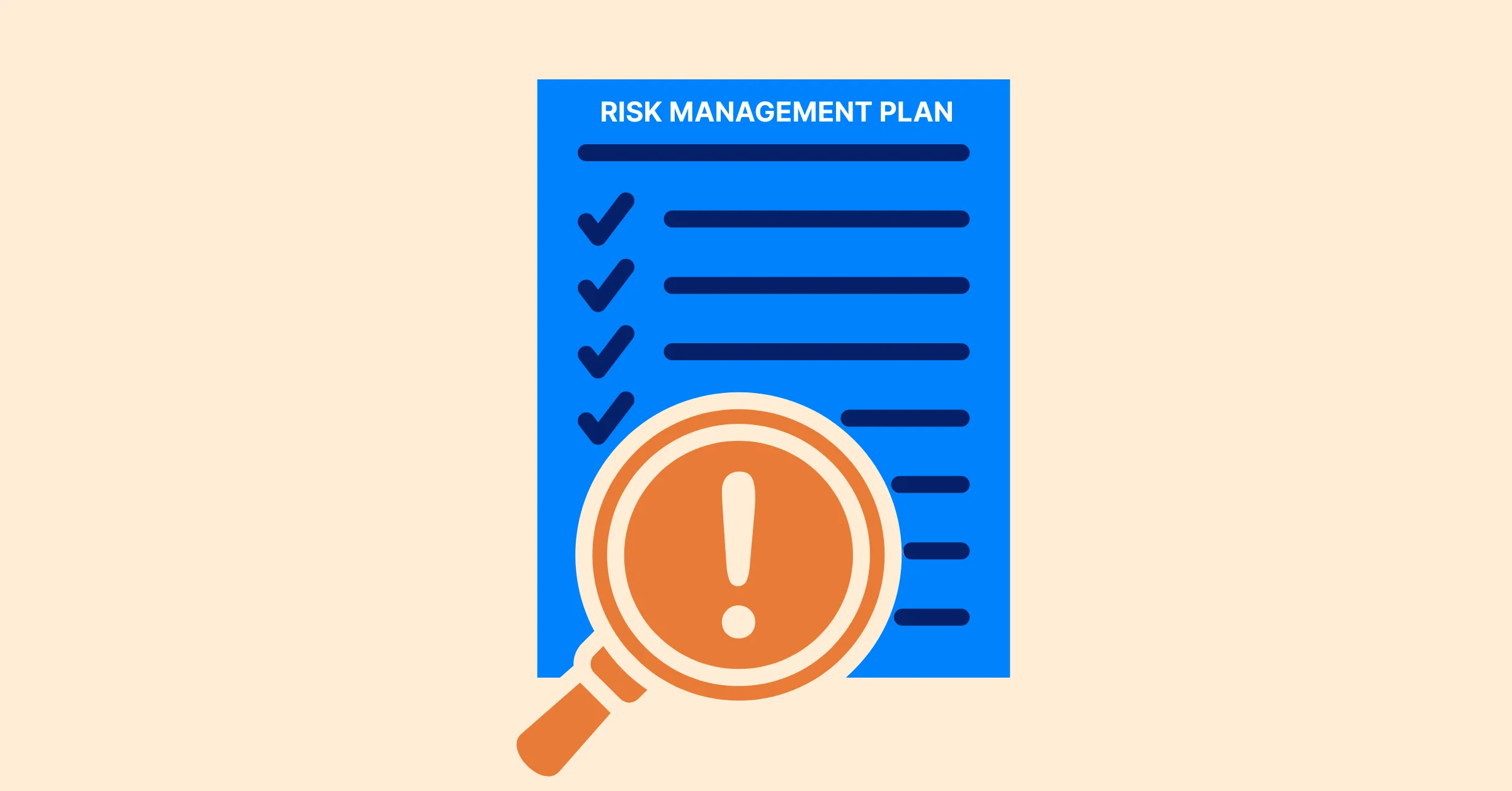What Is Program Management? How It Goes Beyond Project Management
Discover what program management really means, how it differs from project management, and why it plays a crucial role in aligning multiple projects toward strategic goals.
Many people use "program" and "project" interchangeably, but in the world of work management, they’re not the same.
But while they sound similar, they play very different roles. Understanding the difference between program management and project management is crucial, particularly as teams expand and organizations undertake more complex projects.
This blog will explain what program management is, how it differs from project management, and why it matters to businesses that want to align their work with long-term goals.
Defining Program Management
What Is Program Management?
Program management involves overseeing a group of related projects that collectively aim to achieve a common strategic objective. Unlike Project Management, which focuses on delivering a single, specific outcome, program management manages multiple projects to ensure they align with broader business goals, delivering sustained value over time.
Think of program management like running a marathon with multiple relay teams. Each team (project) must complete its part, but success depends on how well everyone works together toward the finish line.
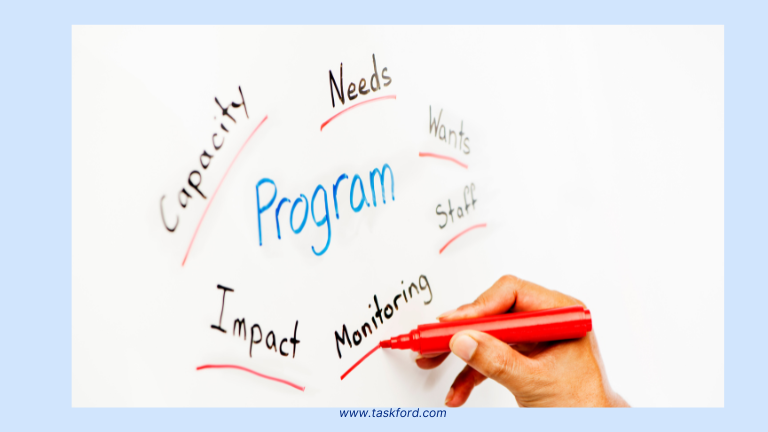
Example: In mobile app development, program management coordinates projects like app creation, backend upgrades, loyalty integration, and marketing to deliver a unified platform that drives long-term customer engagement and revenue. In contrast, project management focuses on delivering each of those individual components successfully.
Want to dive deeper into how project management fits into program management? Explore our Project Management Guide to find more .
Key Components of Program Management
Program management involves coordinating multiple interrelated projects to achieve broader business objectives. The key components are:
- Project Coordination: Program managers ensure that project timelines, milestones, and dependencies are synchronized across all projects to avoid delays and ensure overall program success.
- Resource Alignment: Effective resource alignment ensures that budgets, personnel, and tools are allocated properly across projects, preventing overburdening and optimizing team capacity.
- Managing Interdependencies: Program managers track and manage interdependencies between projects, adjusting timelines and resources to minimize risks and avoid disruptions.
- Alignment with Business Goals: A program manager ensures all projects within the program contribute to the organization’s strategic goals, adjusting as necessary to keep the program on track.
What Does a Program Manager Do?
A program manager plays a strategic role in organizations by overseeing related projects that contribute to larger business goals. Their responsibilities go far beyond tracking tasks or milestones. Instead, they focus on coordination, alignment, and long-term value delivery.
Key Responsibilities:
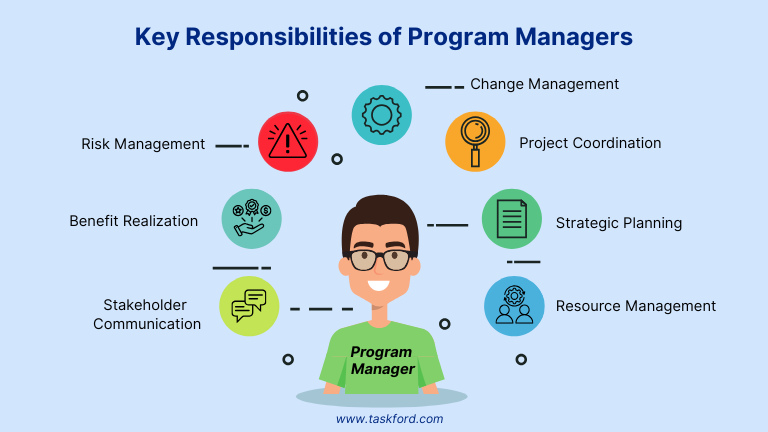
- Strategic Planning: Define the overall program vision and ensure all projects align with business objectives.
- Project Coordination: Oversee multiple interdependent projects, ensuring they move in sync and complement one another.
- Resource Management: Allocate and balance shared resources like personnel, budgets, and tools across projects.
- Risk Management: Identify cross-project risks and develop mitigation strategies to minimize impact on the program.
- Stakeholder Communication: Engage with senior leaders, clients, and project managers to report progress, challenges, and value delivered.
- Benefit Realization: Track whether project outputs are translating into the intended business outcomes, such as cost savings or customer growth.
- Change Management: Adapt the program to shifting business needs, ensuring flexibility while staying aligned with strategic goals.
A Program Manager Is:
- A strategic thinker who keeps the big picture in focus
- A coordinator who ensures smooth execution across teams
- A communicator who bridges the gap between operational teams and executive leadership
- A problem solver who manages complexity and navigates change
Program managers help organizations scale efforts effectively and ensure that project investments deliver real, lasting impact.
Program Management vs. Project Management: Core Differences
While both program management and project management are crucial to an organization's success, they operate at different levels to achieve distinct business objectives. Below is a comprehensive comparison that highlights the key differences between these two roles in terms of purpose, execution, and the impact on organizational outcomes.
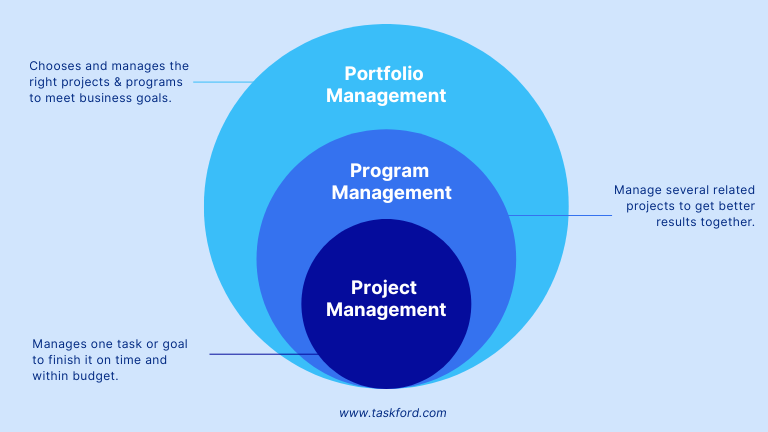
1. Goals (Strategic vs. Tactical)
- Program management is focused on strategic alignment. It ensures that all related projects contribute to broader, long-term business goals. Program managers consider the impact on the business, customer experience, and future opportunities.
- Project management is more tactical. Project managers aim to deliver a specific product, service, or result according to a predefined plan. Their focus is narrower but crucial to operational success.
2. Scope (Broad vs. Narrow)
- A program involves multiple interrelated projects with flexible and evolving scopes. It allows for adapting priorities based on business needs.
- A project has a narrow, well-defined scope and objective, often with less flexibility once execution begins.
3. Timeframe, Flexibility, Ownership
- Programs often run indefinitely or over extended timeframes, evolving as needed. Program managers must remain flexible, adapting priorities and sequencing to maximize business value.
- Projects are time-bound, with clear start and end dates. They are often scheduled in detail and follow strict deadlines. Ownership lies with the project manager, who is accountable for delivery within the defined parameters.
4. Communication and Reporting
- Program managers communicate with executive stakeholders, focusing on business outcomes, benefits realization, and alignment with company strategy.
- Project managers communicate with team members and functional leaders, emphasizing task progress, budget, and timelines.
5. Value Focus
- Programs are designed to deliver value over time, often by integrating benefits from multiple projects. They provide a structure for organizations to manage complexity and stay responsive to change.
- Projects aim to deliver defined outputs efficiently. Their value is measured upon completion, typically by evaluating whether the project met its time, cost, and quality targets.
| Aspect | Program Management | Project Management |
|---|---|---|
| Goal | Strategic business outcomes | Specific deliverables |
| Scope | Broad and adaptive | Narrow and fixed |
| Timeline | Long-term or ongoing | Short-term, clearly defined |
| Focus | Value and alignment | Timelines and output |
| Success Measure | Business impact | On-time and on-budget delivery |
| Communication | Executive and strategic level | Operational and team level |
| Flexibility | High, allows for change | Lower, follows a fixed plan |
In summary, project management is about "doing a project right" (delivering specific outputs), while program management is about "doing the right projects" (achieving strategic benefits through coordinated efforts).
How Program Management Goes Beyond Project Management
Program management builds on the strengths of project management but adds a broader layer of integration and strategic planning. Here are areas where it distinctly adds value:
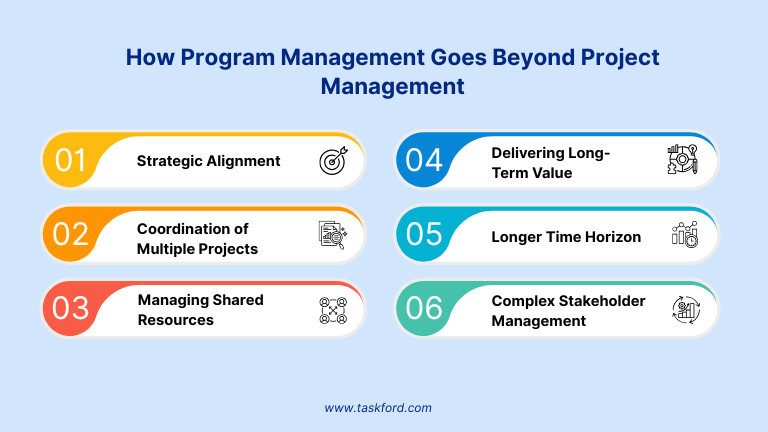
1. Strategic Alignment
Program management ensures that multiple projects align with organizational goals, driving outcomes like market expansion or operational improvements.
For example, a retailer launching an e-commerce platform coordinates website development, inventory systems, and marketing campaigns to boost sales. In contrast, project management focuses on individual project objectives, often without a direct connection to broader strategy.
2. Coordination of Multiple Projects
Program managers oversee a portfolio of related projects, managing interdependencies, shared resources, and conflicts. For instance, in a software rollout, program managers synchronize development, testing, and training to avoid delays. Project management, on the other hand, is focused solely on a single project’s scope.
3. Managing Shared Resources
Program management optimizes shared resources (e.g., personnel, budgets, tools) across multiple projects, balancing competing needs to avoid bottlenecks. Project management manages resources within a single project, often competing for shared resources without broader visibility.
4. Delivering Long-Term Value and Outcomes
Programs aim for sustainable value, tracking whether project outputs achieve outcomes like improved customer satisfaction or increased revenue. Projects focus on short-term deliverables (e.g., a tool, product, or campaign).
5. Longer Time Horizon
Programs have a longer, evolving time frame, adapting to changing needs over the years. Projects, however, have fixed start and end dates, delivering specific outcomes within a set timeline.
6. Complex Stakeholder Management
Program managers engage diverse stakeholders, including senior leadership, to align with strategic priorities. Project managers focus on the stakeholders specific to their project.
When to Use Program Management
Program management is essential when scaling or managing multiple interconnected projects to achieve strategic goals, not for every initiative.
Signs You Need It
- Unified Strategic Goal: Multiple projects contribute to a broader objective (e.g., digital transformation, market expansion), requiring alignment for cohesive impact.
- Centralized Resource Coordination: Projects share resources (e.g., personnel, budgets, tools), needing optimization to avoid bottlenecks and ensure efficiency.
- Interdependent Projects: One project’s delay or failure risks disrupting others (e.g., software upgrades delaying training), requiring coordinated dependencies and timelines.
- Strategic Stakeholder Visibility: Diverse stakeholders, including senior leadership, need insight into how projects advance strategic priorities, requiring unified oversight.
- Long-Term Value Tracking: Success hinges on sustained outcomes (e.g., increased revenue, customer satisfaction) beyond individual deliverables, needing collective goal alignment.
- Ongoing or Evolving Initiatives: Long-term or adaptive initiatives (e.g., innovation programs) spanning years require flexible, strategic oversight.
Examples from Different Industries
- IT - Cloud migration coordinates data transfer, cybersecurity, training, and vendor integration for a seamless transition.
- Marketing - A global brand campaign synchronizes website redesign, PR rollout, social media, and content strategy for unified impact.
- Operations - A new logistics system aligns software upgrades, staff training, vendor contracts, and workflow redesign for efficiency.
Why Program Management Matters
In a fast-moving and interconnected work environment, delivering isolated projects isn't enough. Organizations need to ensure that their efforts are aligned, strategic, and built to last. That's where program management becomes critical.
Here’s why it matters:
- Bridges Strategy and Execution: It connects the day-to-day work with the long-term goals, ensuring that the effort behind each project contributes meaningfully to the bigger picture.
- Maximizes Value: By managing related projects together, organizations can achieve more than the sum of individual efforts. Program management reduces duplication, optimizes resources, and boosts overall efficiency.
- Improves Decision-Making: With a clear view across all related projects, program managers provide leadership with the insights needed to make smarter, faster, and more informed decisions.
- Enhances Agility: Programs are structured to adapt. This makes it easier for organizations to pivot when priorities shift, without derailing progress.
- Supports Sustainable Growth: As businesses scale, the ability to manage complexity becomes a competitive advantage. Program management provides the structure and clarity needed to scale operations effectively.
Ultimately, program management ensures that teams don’t just complete tasks—they move the business forward.
Conclusion
Project management and program management are both essential, but they are not the same. One ensures work is completed efficiently. The other ensures that the right work is being done for long-term impact.
Project management delivers work. Program management delivers impact.
By understanding the strengths of each, you can structure your teams and initiatives to support both immediate execution and lasting success.
Related Resources:
- Work Breakdown Structure (WBS) - Definition, Key Elements & Types
- Agile Project Management vs Waterfall - What's The Difference?
- AI in Project Management - How AI is Revolutionizing the Industry Beyond 2025
- Project Management Terms - 80 Key Terms You Should Know
Making work simpler,
smarter, and more connected
Join our waitlist and be notified first.

Related Blog
Subscribe for Expert Tips
Unlock expert insights and stay ahead with TaskFord. Sign up now to receive valuable tips, strategies, and updates directly in your inbox.


